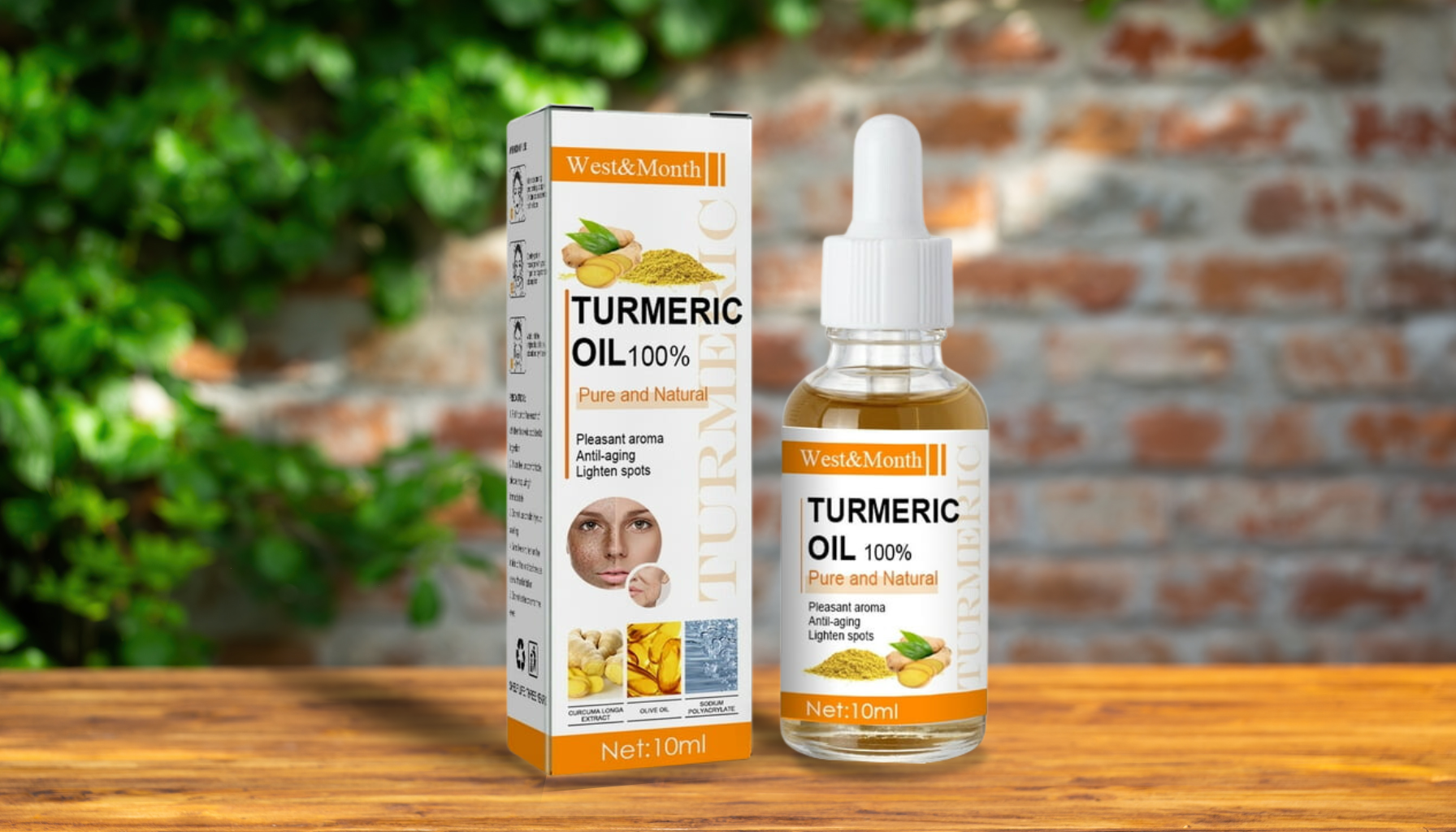I’m a busy professional with a tight schedule. Dark spots and uneven skin tone on my face were a constant frustration. No matter how much makeup I used, the spots always showed through, making me feel self-conscious. That changed when I found the Turmeric Dark Spot Corrector Serum.
I had doubts about turmeric’s ability to brighten and fade dark spots. Could a natural ingredient beat the harsh chemicals I’d tried before? Curious, I decided to try the serum. I’m glad I did.
In this in-depth review, I’ll break down everything you need to know about turmeric dark spot corrector serums: from ingredients, application, effectiveness, pros, and cons, to what kind of results you can realistically expect.
Turmeric Dark Spot Corrector Serum: An Overview
Turmeric Dark Spot Corrector Serum is a concentrated skincare treatment designed to target hyperpigmentation, sunspots, acne scars, and uneven skin tone, using the natural healing power of turmeric. It often contains other supportive ingredients like Vitamin C, hyaluronic acid, and niacinamide to boost skin renewal and hydration.
The idea behind these serums is to offer a safer, gentler alternative to synthetic brightening agents like hydroquinone or retinol, which can sometimes cause irritation, especially for sensitive skin types. The active component in turmeric, curcumin, is packed with antioxidants and anti-inflammatory compounds that help lighten dark spots, reduce redness, and even out the complexion over time.
Why Use Turmeric for Dark Spots?
The benefits of turmeric for skincare are not new—this golden spice has been a beauty staple in South Asia for centuries, often used in bridal rituals for its glowing skin benefits. But why is it particularly good for dark spots?
Dermatologists like Roberta Del Campo, Shari Marchbein, and David Kim have endorsed some ingredients, such as;
Turmeric has been proven to reduce dark spots by up to 14% with regular use. After just 2 weeks, 98% of users noticed a decrease in dark spots and hyperpigmentation. Moreover, 95% found their skin to be brighter and more even-toned.
The serum also includes vitamin C and retinol for skin brightening. Vitamin C is a top choice for discoloration, as it stops melanin production and lightens dark spots. Retinol helps by speeding up cell turnover and reducing wrinkles.
To boost skin radiance, the serum has alpha hydroxy acids (AHAs) like lactic acid. These acids gently remove dead skin cells, improving texture and tone. Regular use led to a 94% reduction in dull, uneven skin.
In modern serums, turmeric is typically combined with other skin-beneficial ingredients like:
- Vitamin C: A potent antioxidant that brightens skin and boosts collagen production.
- Niacinamide: Also known as Vitamin B3, it improves skin barrier function, reduces redness, and diminishes dark spots.
- Hyaluronic Acid: Provides intense hydration, helping the skin stay plump and smooth while aiding in the absorption of other active ingredients.

My Experience Using Turmeric Dark Spot Corrector Serum
I have combination skin, which means some parts of my face are oily while other areas, especially around my cheeks, can be quite dry. On top of that, my skin is sensitive, so I have to be careful with the products I use. When I first started using a turmeric-infused serum, I was curious but a bit unsure.
After all, I’ve been dealing with dark spots from old acne scars and sun damage for years, and many of the treatments I tried in the past left my skin feeling dry, irritated, or even worse.
After a week of using the serum every night, I started to notice a difference. My skin felt calmer, with less redness and irritation than before. But the real magic happened around the four-week mark. I saw my dark spots slowly fading, and my overall skin tone started to look brighter and more even. It wasn’t an instant change, but over time, my complexion looked healthier and smoother.
The best part? I didn’t experience any dryness or sensitivity—something that’s super important for people like me with skin that can easily react. The results came gradually, and I liked how natural and even my skin looked, unlike other treatments that sometimes make dark spots fade unevenly. It’s not a quick fix, but with consistency, the turmeric serum made a big difference for my skin.
How to Use Turmeric Dark Spot Corrector Serum
To get the best results from a turmeric serum, it’s important to follow a consistent skincare routine. Here’s how I integrated the serum into my regimen:
- Cleanse: Start with a gentle cleanser to remove makeup, dirt, and oil.
- Toner: Apply a hydrating toner to balance the skin’s pH and prep it for better serum absorption.
- Serum: After the toner dries, apply 2-3 drops of the turmeric serum directly onto your skin, focusing on areas with dark spots or uneven tone.
- Moisturizer: Lock in the serum’s benefits with a good moisturizer that suits your skin type.
- Sunscreen (Morning Routine): Since turmeric can make your skin more sensitive to sunlight, always apply a broad-spectrum SPF 30 or higher during the day.
Tip: Use the serum twice daily for optimal results, but if you notice any irritation, reduce the frequency to once a day or every other day.
Results: What Can You Expect?
From my personal experience and research, here’s a timeline of what you can expect when using a turmeric dark spot corrector serum:
- 1-2 Weeks: Skin feels smoother, less inflamed, and more hydrated.
- 3-4 Weeks: Dark spots start to fade gradually, and overall skin tone looks brighter.
- 6-8 Weeks: Noticeable improvement in hyperpigmentation and a more even complexion. Dark spots may still be present but significantly lightened.
- 12+ Weeks: Continued use results in a lasting reduction of dark spots, with a clearer, more luminous skin tone.
It’s important to remember that individual results may vary based on skin type, severity of dark spots, and consistency in application. Patience is key!
A Few Considerations Before Starting
While turmeric serum is gentle, it’s still important to do a patch test before applying it to your entire face. This helps ensure you don’t have any allergic reactions or sensitivities to the ingredients.
Additionally, remember that every skin type is different. While some people may see results in as little as a few weeks, for others, it may take longer. Patience and consistency are essential when using any skincare treatment, especially natural ones.

Pros and Cons of Turmeric Dark Spot Corrector Serum
Pros:
- Natural Ingredients: Safe for most the skin types, including sensitive skin.
- Antioxidant-Rich: Protects skin from environmental damage while correcting pigmentation.
- Non-Irritating: Gentle enough for daily use without causing peeling or dryness.
- Brightening: Leaves skin looking radiant and healthy over time.
Cons:
- Slow Results: If you’re looking for overnight magic, this isn’t it. You’ll need to commit for several weeks to see significant changes.
- Staining: Some turmeric serums may have a yellow tint, which can temporarily stain skin or pillowcases if not fully absorbed.
- Sun Sensitivity: Turmeric can make your skin more sensitive to the sun, so daily sunscreen is a must.
Who Should Use Turmeric Dark Spot Corrector Serum?
This serum is perfect for people who prefer a natural approach to skincare, especially if you have sensitive or acne-prone skin. If other brightening products, like acids or chemical treatments, have caused your skin to become red or flaky, a turmeric-based serum can be a gentler, effective solution.
That said, if you have deeper pigmentation issues or conditions like melasma, you might need a more potent treatment, or you may consider combining turmeric serum with other therapies. It’s always a good idea for you to consult with a dermatologist to determine the best approach for your specific skin needs.
Summary
If you’re looking for a safe, natural way to address dark spots and uneven skin tone, turmeric dark spot corrector serum is a fantastic option. It’s especially beneficial for individuals with sensitive skin who may not tolerate stronger treatments. Though it requires some time and regular application, the results are worth it—glowing, even-toned skin without the risks of irritation or harsh side effects.
By adding turmeric serum to your daily routine, you can achieve a healthier, more radiant complexion. Just remember, skin improvement is a gradual process, so stay committed to your routine and enjoy the beautiful long-term results!
Frequently Asked Questions
Q: Will the serum leave a yellow tint on my skin?
A: Some serums may initially leave a light-yellow tint, but this should fade once fully absorbed. Look for serums with encapsulated turmeric if staining is a concern.
Q: Does turmeric serum really remove dark spots?
A: Yes, turmeric serum can help reduce the appearance of dark spots over time. The key ingredient, curcumin, found in turmeric, has powerful anti-inflammatory and antioxidant properties that can fade hyperpigmentation and even out skin tone.
Q: How long does turmeric remove dark spots?
A: The time it takes for turmeric to fade dark spots can vary based on your skin type, the depth of pigmentation, and how consistently you use the product. Typically, you may start to notice improvements in your skin tone within 4 to 8 weeks of regular use. For some, it might take a bit longer, especially for more stubborn or deeper spots.
Q: Can I mix turmeric with Vaseline?
A: Yes, you can mix turmeric with Vaseline to create a DIY skincare treatment. Vaseline acts as an occlusive moisturizer, locking in hydration and preventing water loss, while turmeric brings its anti-inflammatory and brightening properties. If you choose to mix the two, use it as a spot treatment for dry areas or dark spots, but be cautious, as turmeric can stain your skin and clothes.
Q: Can I use this serum with other skincare products?
A: Yes, turmeric serums can usually be layered with other treatments like hyaluronic acid, niacinamide, and moisturizers. Just avoid combining it with harsh exfoliants or acids unless advised by a dermatologist.

